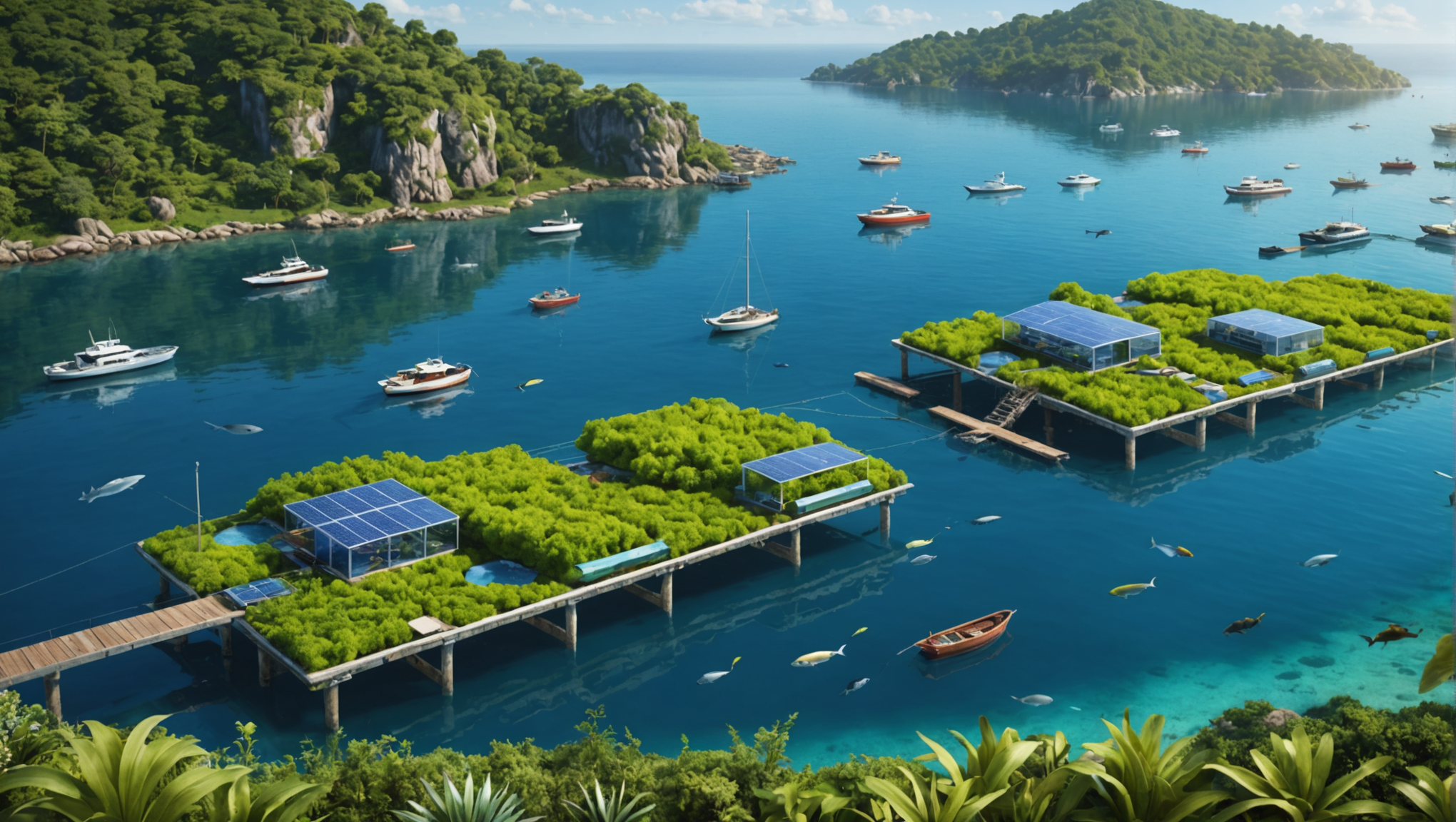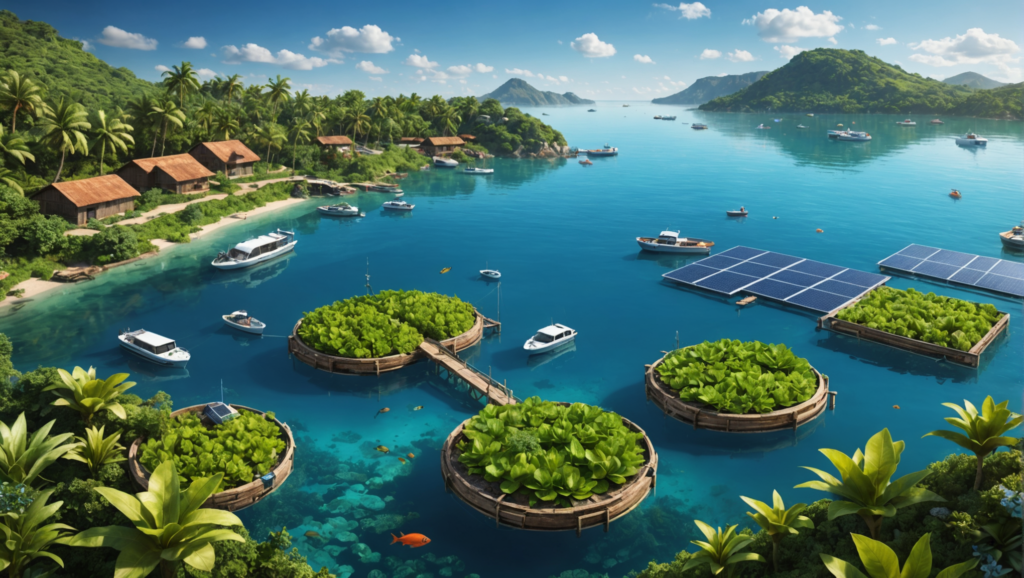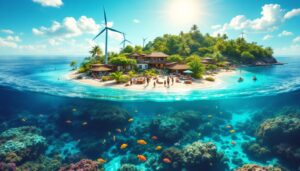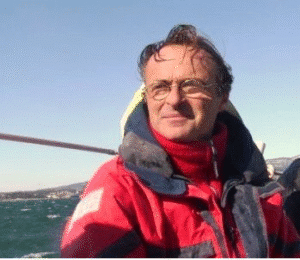The blue economy stands out as an innovative response to contemporary challenges linked to marine sustainability. It represents an economic model that responsibly exploits ocean resources while promoting the preservation of marine ecosystems. At the heart of this dynamic, the main innovations emerging to transform traditional maritime activities into environmentally friendly sectors. Advances such assustainable aquaculture, which makes it possible to feed a growing world population, and the use of renewable energies such as offshore wind, are striking examples of what the blue economy brings.
At the same time, advanced technologies are emerging to improve health services. rescue, prevent the devastating effects of storms and reduce the marine pollution. The sectors of coastal tourism, shipbuilding and fish processing also benefit from these innovations. The blue economy is not limited to the economic exploitation of the seas alone; it embodies a vision of the future where the use of the oceans rhymes with respect, sustainability and prosperity for all.
In a world where environmental issues and climate challenges are increasingly pressing, the blue economy is emerging as a promising model for sustainable development. It is based on the reasoned exploitation of maritime resources while respecting the ocean ecosystem. This article explores the innovations keys to the blue economy that demand our attention, highlighting recent facts, case studies, as well as applicable strategies and future prospects.
Table of Contents
ToggleMaritime technologies: Support for sustainability
Technological advances are proving crucial for sustainability maritime activities. For example, the emergence of autonomous underwater drones allows precise monitoring of marine biodiversity. These drones, equipped with high-performance sensors, collect data on water temperature, salinity and the presence of different organisms. A study carried out by the Institute of Marine Research in Norway demonstrated that, through the use of these technologies, it was possible to detect changes in marine ecosystems several months before they become evident.
Another example of innovation lies in the development of fisheries management applications. Start-ups like Fishbrain offer platforms where fishermen share data on fish stocks, enabling sustainable fishing and responsible. These digital tools promote a better understanding of marine ecosystems and encourage a reduction in waste. The implementation of such technologies directly contributes to the preservation of marine resources while improving the performance of fishing activities.
Aquaculture and biotechnology: Feeding the growing population
There population growth worldwide, estimated to reach nearly 9.7 billion by 2050, poses a considerable challenge in terms of food security. Sustainable aquaculture is positioning itself as a viable solution. Innovations in this sector, such as the genetic hybridization of fish, offer the possibility of increasing the yield of marine farming while reducing the environmental impact. For example, studies on salmon farming show that the use of genetically modified strains can increase resistance to disease, thereby allowing a reduction in the use of antibiotics.
Furthermore, marine biotechnology contributes to food sustainability by exploring algae as a new source of proteins. According to an analysis published by the World Bank, algae could become an essential nutritional alternative for feeding populations while limiting the carbon footprint. Companies like Algama are developing algae-based food products, presenting a solution that is both innovative and sustainable.
Marine renewable energies: A promising future
Renewable energies from the oceans represent unique opportunities for diversifying our energy sources. The projects of, for example, have experienced spectacular expansion. According to the Global Wind Energy Council, installed offshore wind capacity has increased sixfold over the past decade. These facilities not only reduce our dependence on fossil fuels, but also generate local jobs.
In addition, tidal energy, although less developed, is beginning to attract the attention of investors. Pilot projects in France and the United Kingdom are testing this technology with promising results. For example, the installation of tidal turbines in Pentland Sound has the potential to provide electricity for 20,000 homes. This project demonstrates the potential of the blue economy in the field of renewable energy.
There research and innovation in the marine energy sector are also focusing on the conversion of marine waste into energy. Diverse start-ups are exploring how to use plastic recovered from the ocean to create biofuels. This innovative approach contributes to the fight against marine pollution while meeting our growing energy needs.
It is essential to encourage investment in these innovations through sustainable financing, in order to ensure a sustainable maritime future that respects both biodiversity and the needs of future generations.

La Région Réunion signe un contrat de filière pour développer l'#économiebleue
— Outremers360 (@outremers360) September 20, 2024
➡️https://t.co/BCR3WzkVZV
➡️Ce mercredi, à Kélonia, La Région Réunion a franchi une étape importante en signant le contrat de filière "Économie Bleue". Ce document, fruit d'une longue concertation… pic.twitter.com/6YlSPecBRp
FAQ on the main innovations of the blue economy
What is the blue economy? The blue economy refers to the sustainable use of marine resources to promote economic development while preserving the ocean ecosystem.
What are the main innovations in this area? Notable innovations include the marine biotechnology, which offers opportunities for developing products derived from the sea, and CO2 capture technologies which contribute to the fight against climate change.
How does aquaculture contribute to the blue economy? Sustainable aquaculture makes it possible to feeding a growing population while reducing pressure on wild fish stocks and preserving marine ecosystems.
What role does offshore wind technology play? Offshore wind technology provides clean energy source and renewable, thus contributing to reducing the carbon footprint and diversifying maritime energy sources.
What is the Circular Navy? The Circular Marine is a concept which aims to reuse marine resources and reduce waste by adopting sustainable practices in the exploitation of ocean resources.
How does innovation impact fishing? Innovation in fishing, particularly through the use of advanced monitoring systems and stock management tools, helps to make this activity more sustainable and prevent overfishing.
Why is it important to protect coastal habitats? The protection of coastal habitats is essential to maintain marine biodiversity and to mitigate the impacts of storms and coastal erosion.
How do start-ups influence the blue economy? Start-ups bring innovative solutions and disruptive technologies that help transform marine sectors through fresh ideas and creative approaches.









